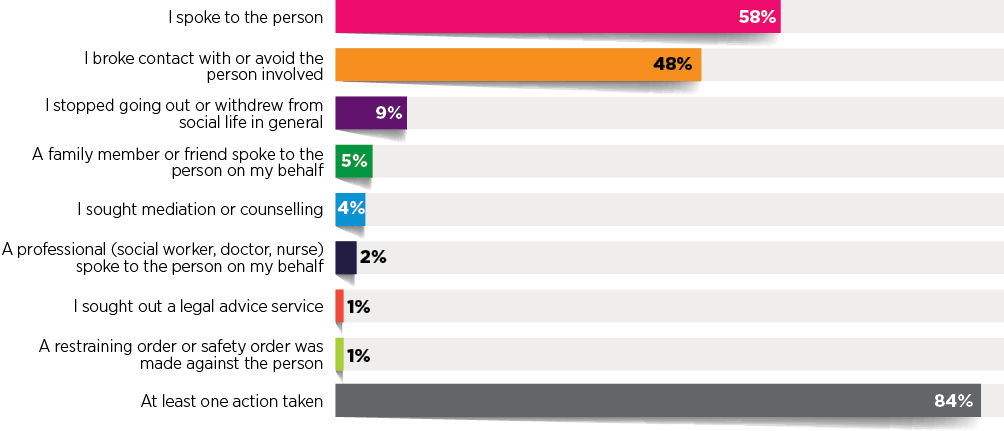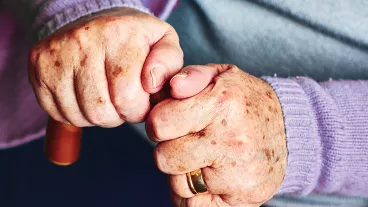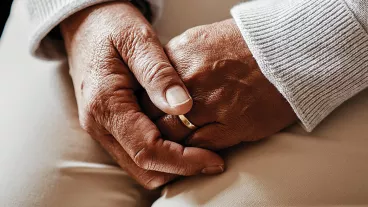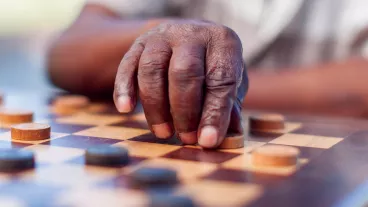Elder abuse in Australia: Sexual abuse
Findings from the National Elder Abuse Prevalence Study
Download Research snapshot
This snapshot discusses elder abuse and presents material that some people may find distressing. If you or someone you know needs assistance, please call 1800 ELDERHelp (1800 353 374). A list of elder abuse support services is available at the end of this snapshot. If you are in immediate danger call Police on 000.
Overview
As part of the National Plan to Respond to the Abuse of Older Australians (Council of Attorneys-General, 2019), the Attorney-General's Department commissioned the National Elder Abuse Prevalence Study (NEAPS) to investigate elder abuse. This snapshot provides the key findings of the Survey of Older People (2020), a nationally representative survey of 7,000 people aged 65 and over living in the community (i.e. they did not live in residential aged care settings). The full report on the NEAPS is available on the AIFS website.
How common is sexual abuse?
The Survey of Older People indicated that 1% of community-dwelling people aged 65 and older in Australia reported an experience of sexual abuse in the 12 months preceding the survey.
Of those who reported experiencing sexual abuse the most common form of sexual abuse was being talked to in an unwanted sexual way (77%), and one-third (32%) reported being touched in a sexual way against their will.
Most older people who experienced sexual abuse reported experiencing one type of sexual abuse (65%) and over one-third (35%) reported multiple types of sexual abuse.
Figure 1: Participants who experienced sexual abuse in the past 12 months, proportion reporting each sexual abuse item and number of items reported

Women were more likely than men to report sexual abuse. Living without a partner (i.e. being separated/divorced, never married, widowed) and living in socio-economically disadvantaged areas were factors associated with a greater risk of sexual abuse. An experience of sexual abuse was associated with poorer physical health, poorer psychological health and a lower sense of social connection.
Who commits sexual abuse?
Participants who reported an experience of sexual abuse in the 12-month period prior to the survey provided information regarding their relationship with the sexual abuse perpetrator(s) and further information on the 'main perpetrators'. The 'main perpetrator' of sexual abuse refers to the only sexual abuse perpetrator or the perpetrator who affected the older person the most if more than one person perpetrated sexual abuse.
- Most 'main perpetrators' of sexual abuse were male (eight in 10) and they were typically older (64-74 years old; 45%).
- Over one-third of 'main perpetrators' of sexual abuse (35%) had alcohol problems, and the presence of mental health and physical health problems was also relatively common (30% and 28% respectively).

Figure 2 shows the relationship between sexual abuse perpetrators (including 'main perpetrators' and other perpetrators) and the participant who experienced the abuse.
- The largest perpetrator group for sexual abuse was friends (42%).
- Acquaintances, neighbours and partners/spouses were other relatively large sexual abuse perpetrator groups (13%, 9% and 9% respectively).
Figure 2: Relationship of perpetrators to the participants who experienced sexual abuse (as % of all sexual abuse perpetrators)

Note: An older person may report more than one person who perpetrated sexual abuse.
Do people who experience sexual abuse seek help?
Less than one quarter (24%) of participants who experienced sexual abuse reported that they sought help or advice about their experience. The common sources of help and advice were:

Regardless of whether they reported seeking help or advice from a third party, most older people who reported an experience of sexual abuse (84%) said that they took action, or had action taken on their behalf, to stop the abuse from happening again. As shown in Figure 3, the most common actions were:
- speaking with the person perpetrating the abuse (58%)
- breaking contact with or avoiding the person involved (48%).
Figure 3: Action taken by older persons who experienced sexual abuse in the past 12 months

Note: Multiple responses and sum may exceed 100%.
Support services/Helplines
- If you have any concerns about potential or actual elder abuse, please contact 1800 ELDERHelp (1800 353 374) to be redirected to the existing phone line service in your state or territory (free call).
- If you or someone you know have experienced violence or sexual assault and require immediate or ongoing assistance, contact 1800 RESPECT (1800 737 732) to talk to a counsellor from the National Sexual Assault and Domestic Violence hotline.
- For confidential support and information, contact Safe Steps' 24/7 family violence response line on 1800 015 188 or the Men's Referral Service on 1300 766 491.
- For a confidential discussion with an experienced counsellor, call Lifeline on 13 11 14.
Elder abuse in Australia: Prevalence
Elder abuse in Australia: Physical abuse
Elder abuse in Australia: Psychological abuse
Elder abuse in Australia: Financial abuse
Elder abuse in Australia: Neglect
Elder abuse in Australia: Culturally and linguistically diverse Australians
Elder abuse in Australia: Wills, powers of attorney and family agreements
Featured image: GettyImages/PeopleImages
Australian Institute of Family Studies. (2022). Elder abuse in Australia: Sexual abuse. (Findings from the National Elder Abuse Prevalence Study). Melbourne: Australian Institute of Family Studies.
Download Research snapshot
Related publications

Elder abuse in Australia: Financial abuse
This snapshot provides key findings from the Survey of Older People (2020), a nationally representative survey of 7,000…
Read more
Elder abuse in Australia: Neglect
This snapshot provides key findings from the Survey of Older People (2020), a nationally representative survey of 7,000…
Read more
Elder abuse in Australia: Culturally and linguistically…
This snapshot provides key findings from the Survey of Older People (2020), a nationally representative survey of 7,000…
Read more